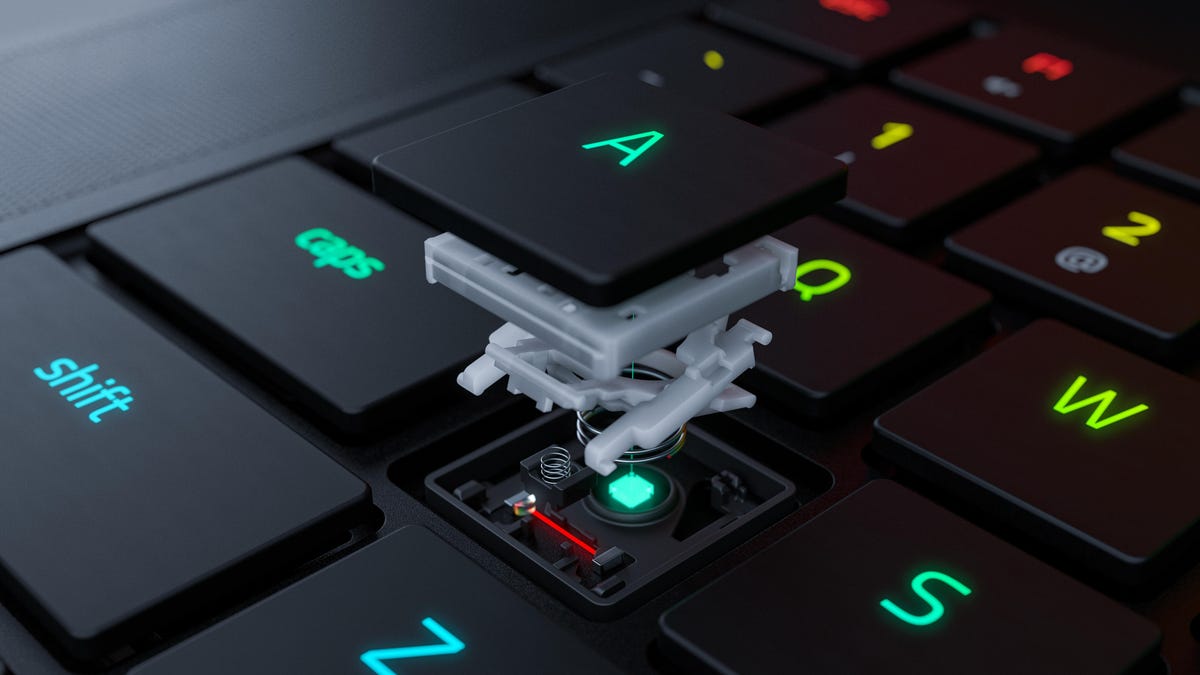Razer hopes Blade 15's new optical keyboard clicks with gamers
Will Razer's quietly clicky, tactile optical keyboard overthrow the laptop mushocracy?

Razer's new gaming laptop keyboard uses infrared tech for extra speed.
If you love clicky, tactile keyboards -- or frankly, are at all picky about the feel of a keyboard -- chances are you can't stand the quiet but shallow-travel, mushy keyboard on the Razer Blade 15 line of laptops. So Razer went back to the drawing board for its thin-and-light gaming laptop and emerged with a new low-profile optical switch that combines more of a mechanical-switch feel with the speed and low-profile advantages of optical technology.
The keyboard launches Monday in one model of the Blade 15 Advanced, the configuration with the Core i7-9750H, 240Hz 1080p screen, RTX 2070 and 512GB SSD. The keyboard ups the price by $49 to $2,649, and Razer will be rolling it out to additional configurations next year. Razer also took the opportunity to add a Quartz Pink model of the Blade 15 Advanced entry configuration (joining the pink Stealth) for the same $2,000 as its basic black sibling.
Read more: Best gaming keyboards under $100 for 2019
Now you can get a Quartz Pink Razer Blade 15 to match your accessories.
At rest, an optical switch blocks an IR beam. Then when you press, the block briefly moves, so the beam can hit the opposite side, which initiates (actuates) the keystroke. The underpinnings, which otherwise seem quite similar to a scissor switch, provide the clickier feel and dictate the 55-gram actuation force. Until we can harness quantum entanglement for our typing needs, light is the fastest mechanism for keystroke actuation, making optical switches theoretically more sensitive than mechanical or membrane. The actuation mechanism works similarly to the Razer Huntsman Elite desktop keyboards.
The new switches actuate at 1 millimeter, with a complete travel distance of 1.7mm. Though 1mm may sound like a pretty high actuation (the distance from the top at which a keypress registers) -- Razer's full-size Green switches also have 1mm actuation and 55-gram force, and many keyboards' are typically at 2mm -- it's not quite the same feel because of the shorter total travel compared with a mechanical keyboard because you bottom out faster. 1mm is about 60% of the way down on the new optical switches, while that same 1mm on a 4mm switch is 25% of the way.
That doesn't necessarily make it better or worse, just different. But the increased travel of the new switches, up from 1.1mm, and the increased tactility definitely felt much better in my extremely brief fingers-on.
Because there are no physical contacts, the optical technology facilitates zero debounce -- it registers only a single keypress -- and in theory, the lack of friction significantly increases the life span of the switches. It has an n-key rollover (so go ahead and mash them all at once) and retains the per-key RGB lighting of the earlier models.
Read More: Best Gaming Gifts for the Holiday Season

